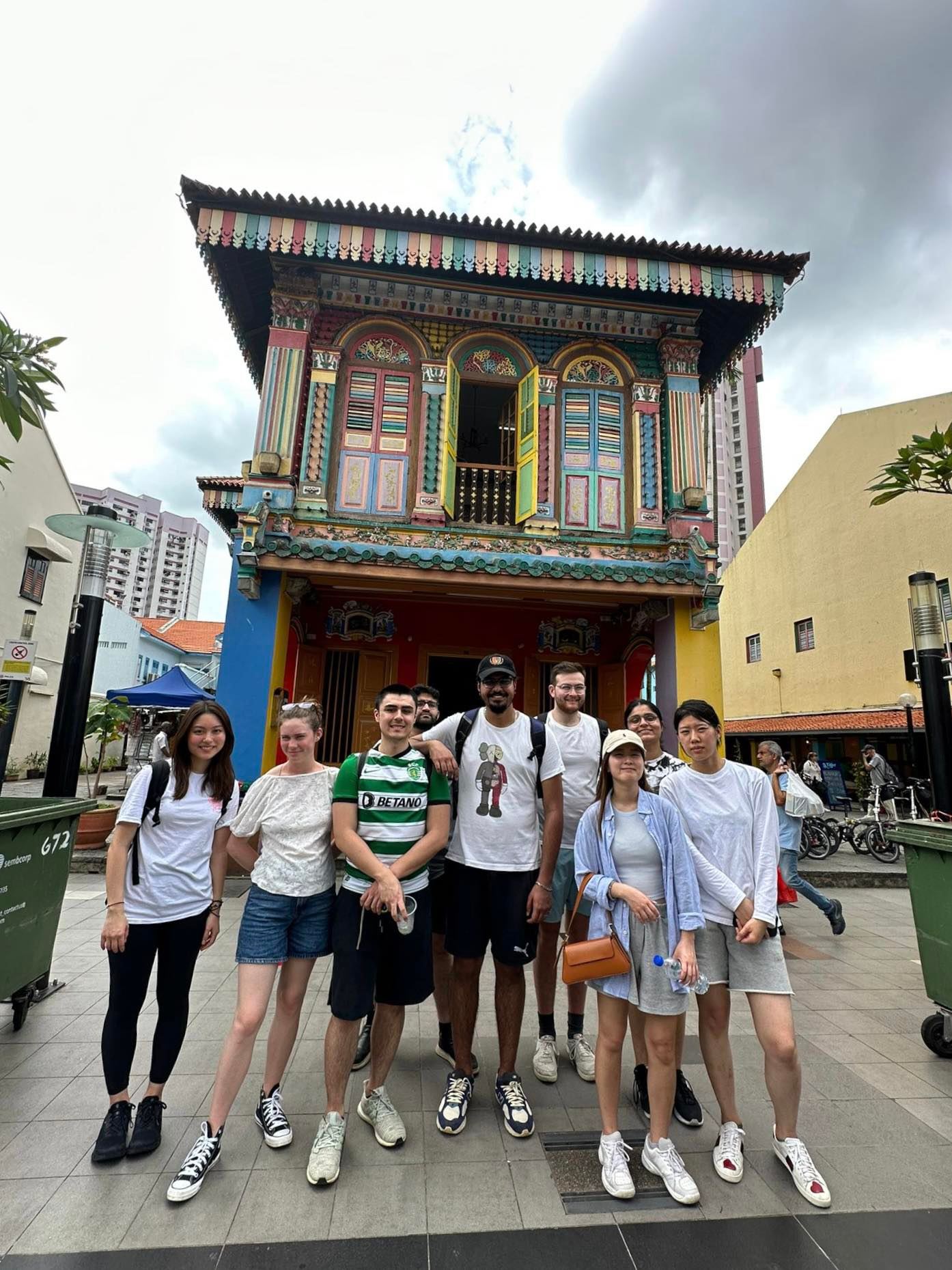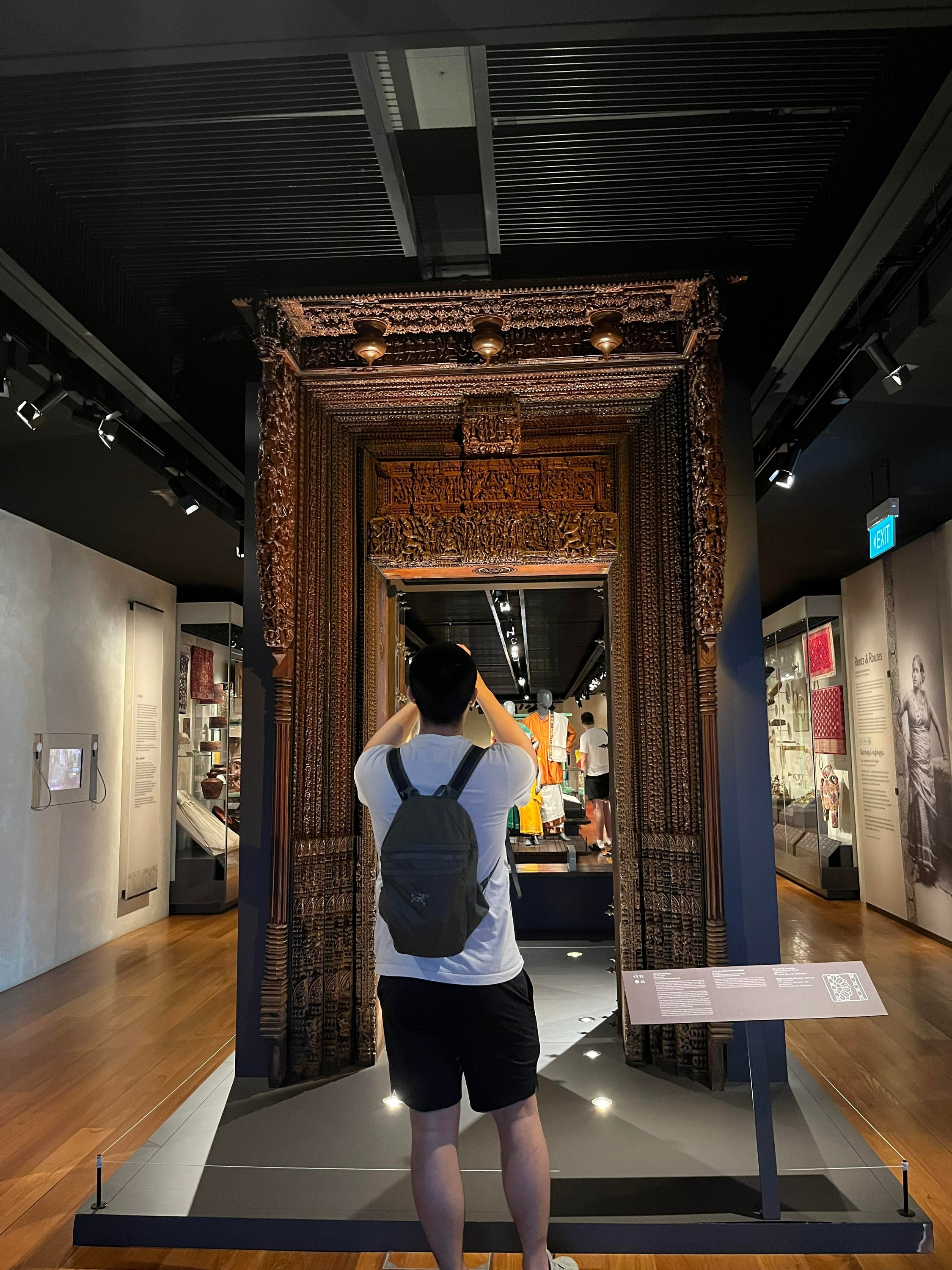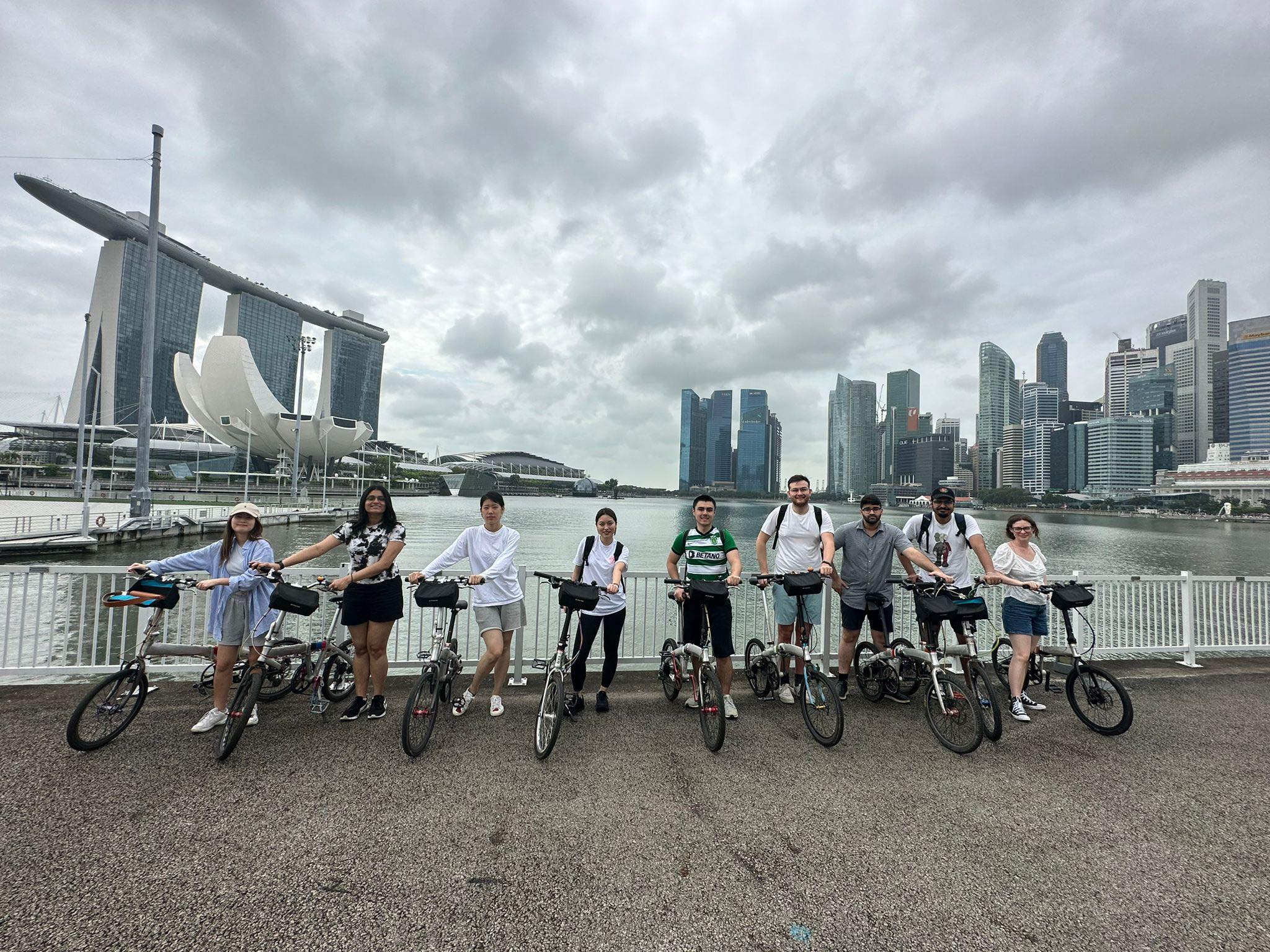
For CAS students, Singapore offers insights into global migration dynamics and narratives of nation-building
Studying migration to and from Singapore offered a group of Contemporary Asian Studies (CAS) students a window into the international migration dynamics at the core of their capstone course, CAS400H. In February 2023, the students took their classroom learning to the streets of Singapore for an international course module led by Professor Rachel Silvey.
Singapore proved an excellent site for delving deeper into issues examined in CAS, which teaches students about the links between Asia’s diverse histories and cultures and the region’s evolving role in global affairs. As the largest port in Southeast Asia connecting the Indian Ocean to the South China Sea, Singapore is a former British colony which has become a prosperous and ethnically diverse independent city-state.
The nine participating students recently completed CAS400H. This capstone seminar serves as the culmination of the CAS major, teaching students to critically examine dominant narratives of colonialism and development as they approach contemporary social, political, and economic issues in Asia from an interdisciplinary perspective.

Singapore’s economy relies on large numbers of temporary migrants, recruited from lower-income countries in South and Southeast Asia. Migrant workers make up the majority of the country’s construction workers, as well as care workers and domestic workers. 1 in 5 households employs a live-in domestic worker.
Students learned about injustices faced by migrant workers through meeting with the non-governmental organization HOME (Humanitarian Organization for Migration Economics), which supports, empowers, and upholds the rights of migrant workers in Singapore. In light of the difficulties that migrant workers face, learning about HOME’s work was inspiring. As one student, Sachin Oza, observed, “HOME really challenges the government,” a dynamic he hadn’t expected to see given stereotypes about the repressive character of the Singaporean state.
Through their explorations of the city, students had the opportunity to observe how space is organized, and for whom. They visited Lucky Plaza, home to Filipino bakeries, grocery stores, and shops where migrants visit to enjoy their time off and send home remittances. It was just a few steps away from a “super mall” full of global luxury brands on Orchard Road, with more plazas close by catering to migrants from elsewhere in Asia. Despite their proximity, these places served as enclaves for different populations, and the socioeconomic inequality was evident. According to Matt Aydin, “Lucky Plaza was old and run down, small, and cramped,” a striking contrast to other gleaming, expansive malls that catered to the upscale global tourist.
Visiting the Sikh temple Gurdwara, Abdullah Durrani observed how groups of workers, many in the same uniform, would come in the morning to sit and drink chai, talk, and pay respect to the guru before heading to work: “It was informative of the culture and community.” Similarly, Uthara Vijay noticed that Little India, where the group stayed, was built and maintained so well by the community of migrants who lived there: “I felt like I’m not even in Singapore, I’m home.”

Liam Culp noted the “funnel-like” structure of how Singapore was laid out: “the stuff they want tourists to see is all at the tip – travel further out by bus one hour and its grimier, less modern, more pollution, less aesthetically pleasing.”
This trip was unique in that students were empowered to help build the itinerary. Days were structured with visits to museums, where Professor Silvey asked students to examine the official discourse that the Singaporean government and institutions were presenting about its history, contemporary relations, and how society is managed. In their afternoon explorations, she prompted them to compare that official narrative to what they were seeing on the ground.
Students could see how the nation’s history and culture were constructed into a deliberate narrative, one that was presented through museum exhibits as well as by their bike tour guide, who talked at length about Singapore’s neighbourhoods and monuments. The dominant narrative emphasized the founding of the nation by British colonist Sir Stamford Raffles, and how five races had come together in harmony to create a multicultural and prosperous nation.
For students, this official discourse raised more questions than answers: What details are being left out? Why do so many Singaporeans embrace the city-state’s colonial past, in contrast to anti-colonial perspectives in other parts of Asia and the world? Why don’t the city’s residents seem to mind being surrounded by surveillance cameras, or facing steep fines for minor offences? A modern and prosperous state, Singapore is part of a “rising Asia” – but who benefits, and who is excluded?

Singapore offers its residents a clean, safe, and orderly downtown, an efficient public transportation system, and “some of the best and cheapest food in the world.” But with no labour protections for the migrant labourers who make all of this and more possible, Matt asked, “is it worth the cost?”
Jennifer Han says she’ll carry what she learned as she looks ahead to a career in public policy: “the main lesson that I drew from our trip is to not just accept the national dominant discourse at face value. I learned the importance of speaking to the locals, like the migrant workers and marginalized populations, to gain a deeper understanding about what is going on in the country.”
In addition to the academic insights they gained, a highlight of the trip for students was the opportunity to get to know one another better, particularly after the isolation of the past few years. Abdullah came into the trip not knowing most of his other classmates very well, and reflected, “I feel like we really bonded. We made a fun little group.”
Photos by Jennifer Han.

